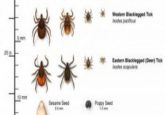How infections spread: the case for varied and dynamic inputs

Understanding infectious disease spread is problematic, given the randomness of most outbreaks. Yet attempting to predict the transmission wave is essential for mitigating the impact.
A key element in the fight against infectious diseases is computer modeling. Models enable epidemiologists to predict both where the next outbreak may occur and the course of an outbreak, so that measures can be taken to contain the spread of a pathogen and resources can be more usefully allocated. Examples include providing policy makers with indicators like the levels of personal protective equipment required; quantities of therapeutics and vaccines; staffing needs and work from home guidance; school closures and so on [1].





